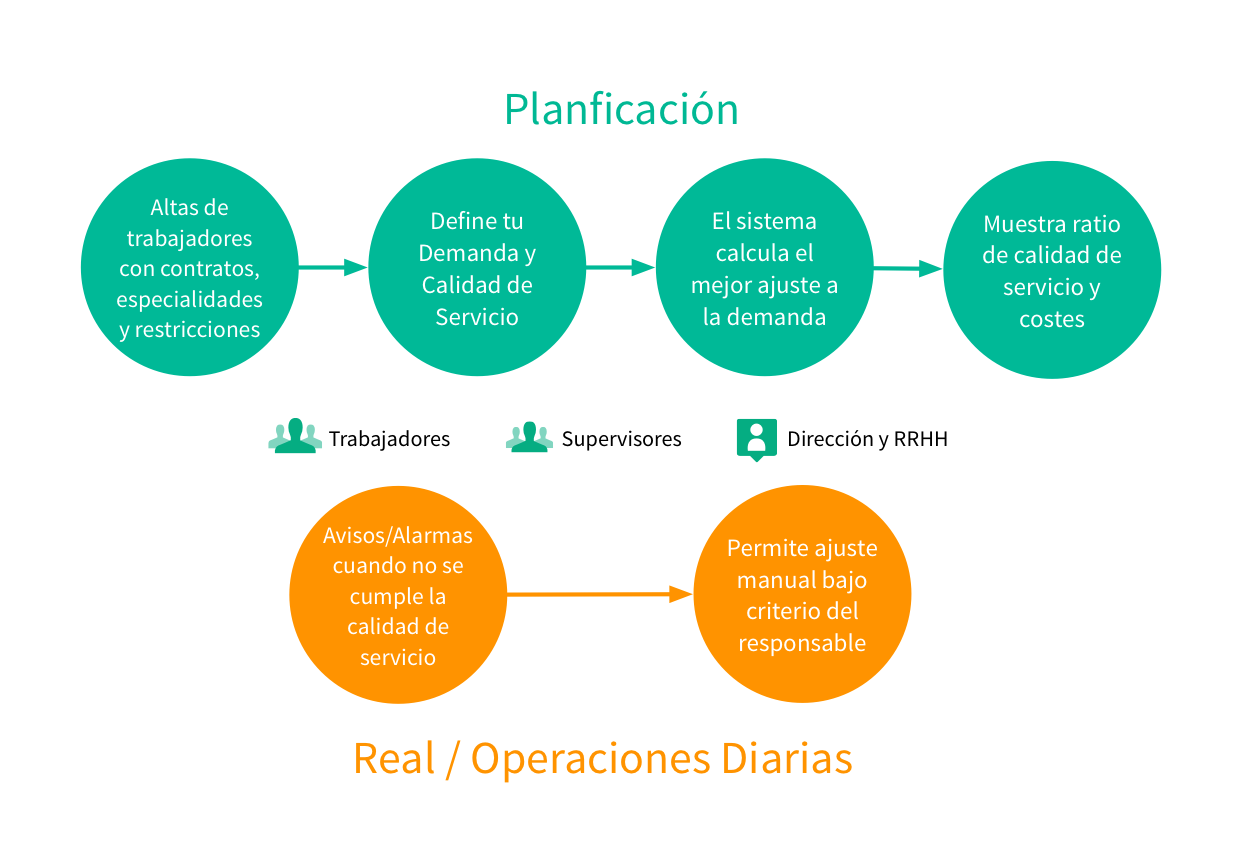During a team creation in aTurnos, a question frequently made by supervisors and human resources directors is the number of employees they need to cover the service. It is a process that depends on many variables but it is summarized in the definition of service quality they want to offer regarding demand. Furthermore, the quality of service is a quantifiable variable that can be later analyzed to check the team’s behavior ratios and their results.

The quality of service of human resources of a team can measure the quantity of employees per shifts and the experience of the same with the existent demand in that moment or initially which is estimated in real time. For example, in nursery the demand can be analyzed attending to the medical admission, the number of beds, possible work peaks or complexity of treatments. For example, in an emergences service it can exist a service quality of 1 nurse , 3 beds or 2 new medical admissions.
The problem of identifying automatically is when the estimation of a service quality is not accomplished and employees must rotate during the same type of shift of a service to another or make new recruitment decisions. To analyze possible results we have developed a demand feature inside aTurnos which contains two main functions. Moreover, aptitudes or staff’s knowledge can be identified to make the best reallocations/options to configure teams to real necessities. Functions are: